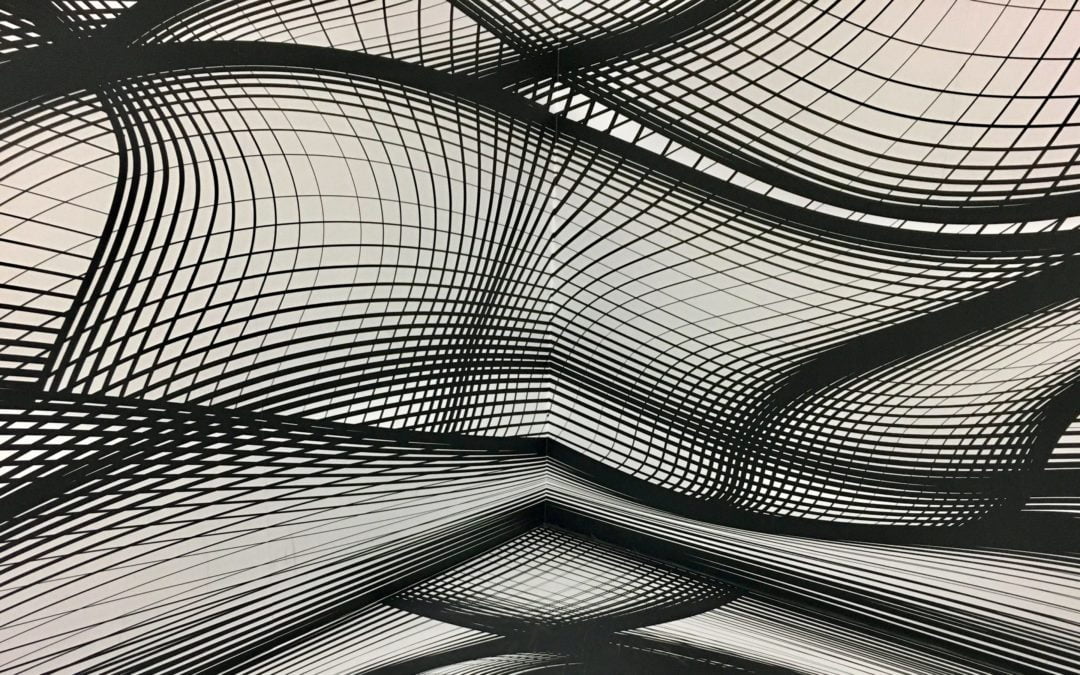Some say that we are surrounded by mathematics all the time, experiencing its presence in architecture, design, art, but especially in nature (beehives, snail shells, and so on). Honestly, it’s pretty hard to disagree, but at the same time, not every person is able to see the world in the way mathematicians do.
As VR/AR developers, we are able to understand a strong need of pushing boundaries in terms of what’s visually accessible and what’s not. Our pursuit is to make abstract things visible, so everyone could better understand them. It’s just like with human imagination – creating images of even very complex subjects makes them so much easier to comprehend.
Let’s start from the shapes and functions with GeoGebra AR – a very popular set of tools ready to use on every level of education. By coming in different versions, the system allows its users to understand common specifics of geometry, algebra, statistics, and many more.
The idea behind the software is to make a responsive and easy-to-use visual laboratory for the young and curious minds to play with. And the word “play” is pretty important here because the app is actually encouraging users to build custom objects.
Apart from the AR app itself, GeoGebra offers an open library that contains “over 1 million free activities, simulations, exercises, lessons, and games for math & science.” That way pupils can study functions, algebra, arithmetic, trigonometry, and more.
Using AR technology in order to allow students to extend their learning abilities works just perfectly in the case of geometry. Viewing 3D models through the camera is the best way to make numbers much more real, customizable, and creative.
Another great example of using the visual advantages of AR for schooling is the Graphing Calculator AR. This particular piece of code gives us a chance to change the algebra or calculus into the graphs projected in the nearest surroundings. And by the use of colors and gradients, it’s just visually stunning!
Graphing Calculator covers graph functions, implicit relations, parametric curves and surfaces, inequalities, and many more topics.
It’s easy to see how important it is to have a versatile tool that will be helpful not only as a one time wonder during a few special classes. This solution brings AR to school as a useful study system for many education levels.
A wide range of capabilities that this technology gives us simply proves that in the near future AR can become a popular and relevant way to present different scientific issues, making them interesting and clear to the students.
Now, let’s focus on the basics. Shapes and their bindings are something we learn at the early stages of education, sometimes even before kindergarten. Remember this kind of toy that has a couple of holes matching the same shaped blocks? Well, that’s the real geometry 101.
The Shapes 3D app is allowing everyone, especially kids, to build many different forms, and by that, teaching them about specific structures and dependencies between those. Children can draw the objects and assemble them (on two different mobile platforms), depending on which stage of schooling they currently are.
Comparing it to the previous two examples, the software’s much easier to use, because it’s not about the numbers and equations, but rather the visual part of learning geometry. That way it can seem more appealing also for the younger students, who are just starting to explore mathematics.
Thanks for reading and if you are interested in using new technologies (augmented or virtual reality) in terms of enhancing education process, feel free to contact us. Together we can create original and useful application you are looking for.

